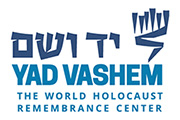Editors: Dina Porat and Dan Michman in cooperation with Haim Saadoun
During the second half of 1942, several events signaled a shift on the fronts of World War II. The failed German summer offensive on the Eastern Front led to the encirclement of the Sixth Army in Stalingrad. In Northern Africa, Operation Torch marked the prelude to the defeat of the German Africa Corps. Since 1941, information had begun to trickle out about the German mass murder program in the occupied territories. The first counteroffensives of the Red Army had led to an initial understanding of the scope of the killings, but additional, reliable sources like the Riegner Telegram provided important details and indicated the shift to the industrial extermination of the Final Solution. As a result, the Allies and Jewish organizations published their first official statements that addressed the German murder operations. The Allies’ position and their response to the growing evidence of genocidal action remains a matter of debate among historians. Could the leaders of the Allied nations have understood the magnitude of the Final Solution sooner? Were they in a situation that would have allowed them to invest more resources to rescue its Jewish victims? Yad Vashem’s nineteenth biannual international conference gathered scholars from fifteen countries to discuss these questions from a wide variety of angles. This volume, edited by senior historians Dina Porat and Dan Michman, includes selected articles by contributing researchers with the aim to provide new insights and answers into the developments that unfolded during that critical phase of the war.
